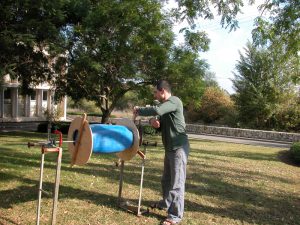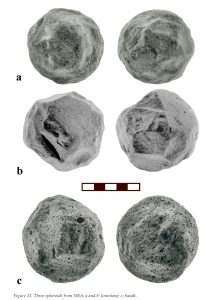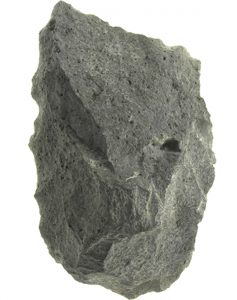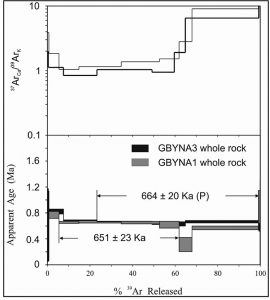The geological and stratigraphic data of this study were obtained from a series of sections that were cut into the east bank of the Jordan River and from geological cores that were drilled to a depth of 10 meters along the river as part of the 2002 geo-archaeological survey. In addition, the excavation of a small area (2m2) exposed at section 02-5 is the basis for many of the observations presented below. The excavation yielded an in situ assemblage of many un-rolled Acheulian tools interpreted as part of an in situ archaeological horizon. Though small, this excavation provides a source of observations that are not based solely upon surface collected artifacts.
At the base of this section is a layer of gray, basaltic sand that is probably part of the BYF. This layer is overlaid by un-weathered basalt flow, approximately 4 m thick. On top of the basalt are BYF tool-bearing layers containing tools and bones in mint condition (Fig. 3: Layer 4 in section 02-5). The upper part of this section (Fig. 2 and 3: Layer 3 in section 02-5) is comprised of a conglomerate of pebble-to-boulder sized basalt and small flint clasts, in which heavily rolled Acheulian artifacts are abundant. In many instances tools excavated from this layer show evidence of breakage of handaxe tips and notched tool edges, indicating transportation
Papers and Information
- Gonen Sharon, Craig Feibel, Nira Alperson-Afil, Yehudit Harlavan, Gilbert Feraud, Shoshana Ashkenazi, and Rivka Rabinovich (2010) “New Evidence for the Northern Dead Sea Rift Acheulian.” PaleoAnthropology 2010:79-99
- Sharon, G., Feibel, C.S., Belitzky, S., Marder, O., Khalaily, H., Rabinovich, R., 2002. 1999 Jordan River Drainage Project Damages Gesher Benot Ya’aqov: A Preliminary Study of the Archaeological and Geological Implications. In: Gal, Z. (Ed.), Eretz Zafon – Studies in Galilean Archaeology. Israel Antiquities Authority, Jerusalem, pp. 1–19.



